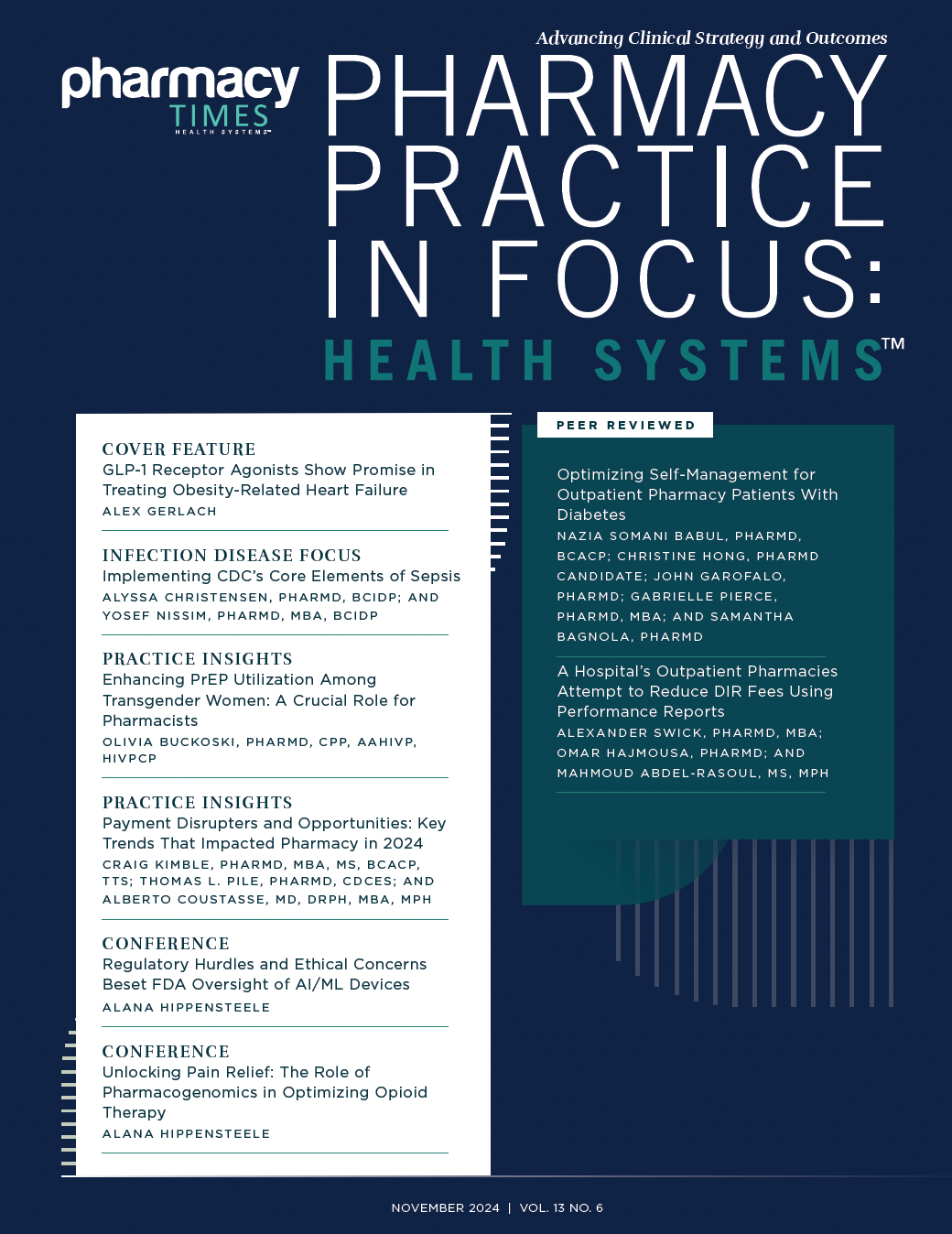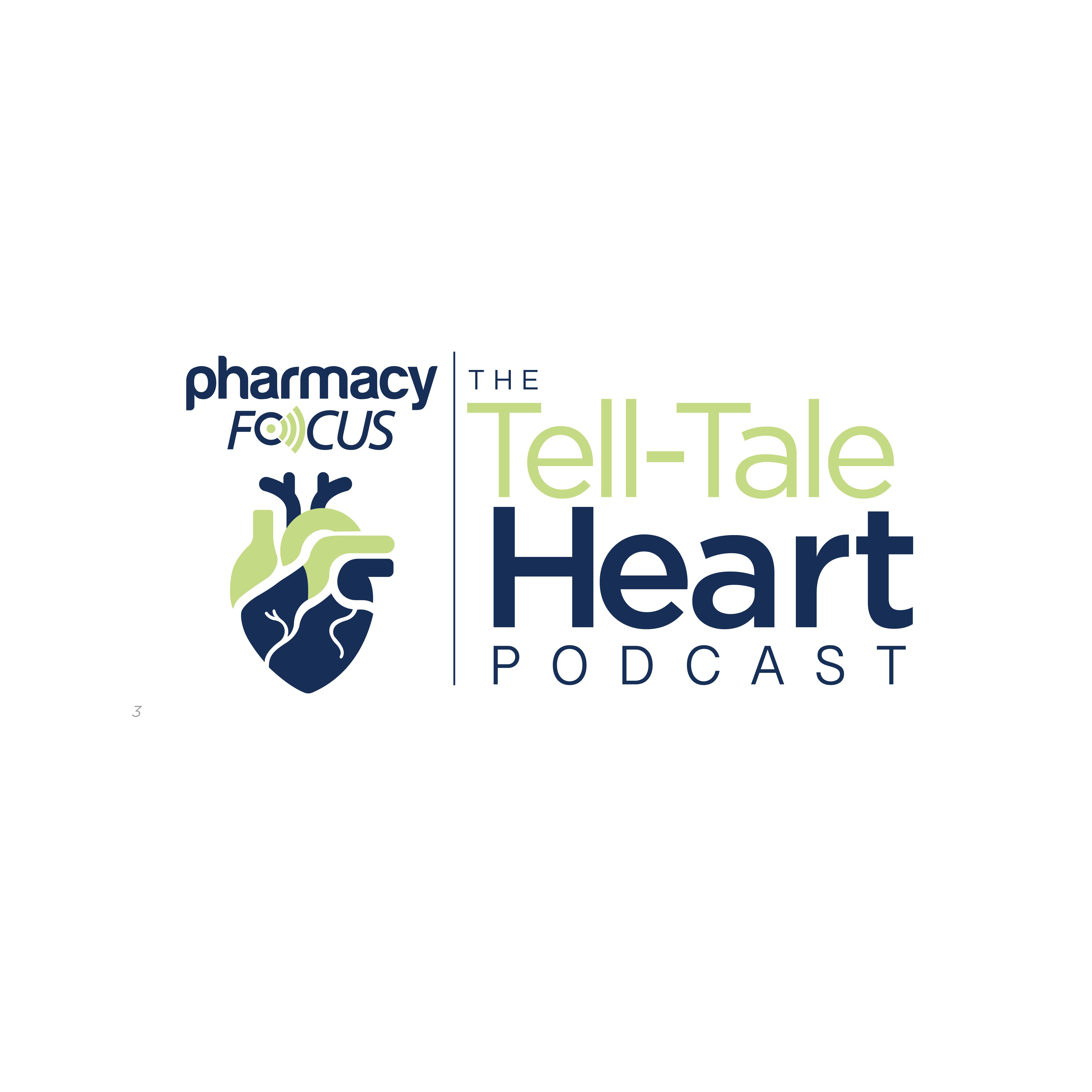
Publication
Article
Pharmacy Practice in Focus: Health Systems
GLP-1 Receptor Agonists Show Promise in Treating Obesity-Related Heart Failure
Author(s):
Key Takeaways
- Obesity significantly contributes to HFpEF, affecting heart structure and function, increasing HF incidence and prevalence.
- GLP-1 RAs, like semaglutide, show potential in reducing HF risk by improving weight, heart function, and symptoms in obesity-related HFpEF.
- SELECT and STEP-HFpEF trials highlight semaglutide's efficacy in reducing adverse cardiac events and improving HF-related symptoms.
- Strategic allocation of GLP-1 RAs is crucial due to high costs and shortages, ensuring access for high-risk populations with obesity-related HFpEF.
These therapies represent an encouraging advancement in cardiovascular care.
An estimated 6.7 million individuals in the United States older than 20 years live with heart failure (HF), according to the Heart Failure Society of America. That number is expected to increase to 8.7 million by 2030, highlighting the need for improved treatments to support cardiovascular (CV) health in high-risk populations.1
Image credit: lovelyday12 | stock.adobe.com

Some studies have demonstrated the potential of glucagon-like peptide-1 receptor agonists (GLP-1 RAs) to treat obesity, which is a significant risk factor for cardiovascular diseases (CVDs) leading to HF. Data from multiple trials have shown the subsequent heart benefits associated with use of GLP-1 RAs alongside significant improvements in weight, which has led researchers to investigate the safety and efficacy of these agents for HF.
HF with preserved ejection fraction (HFpEF) is becoming increasingly common, especially among patients who are overweight or struggling with obesity. Obesity is a multifactorial disease that can be a result of biological, psychosocial, socioeconomic, and environmental factors that can be managed through lifestyle modifications and medical interventions. Studies have identified the link between obesity and increased risk of CVDs, establishing that obesity changes the heart’s structure and function, leading to the increased incidence and prevalence of HFpEF and other related diseases.2-4
Additionally, weight gain causes the surface area of the body to increase, which leads to the expansion of plasma volume, circulating blood volume, and stress blood volume. Specifically, stress blood volume is blood that is mobilized through physical activity, meaning many patients with HFpEF may not be symptomatic at rest but may experience shortness of breath with minimal physical activity. When stress blood volume is activated and metabolized into systemic circulation amid obesity-driven complications, such as increased blood pressure, it can lead to thickening and stiffening of the heart muscle, inflammation, and fibrosis.5
“When you compose that increase in blood volume, especially the stress blood volume, with a stiff, noncompliant left ventricle, especially in the setting of physical activity, this can create a situation in which increased blood volume is going into a noncompliant heart, substantially raising the pressures in the heart and ultimately driving the symptoms of [HF],” Mikhail N. Kosiborod, MD, a cardiologist at Saint Luke’s Mid America Heart Institute in Kansas City, Missouri, said in an interview with Pharmacy Times.5
According to Kosiborod, approximately 80% of patients with HFpEF also have obesity, and as of 2024, there are no FDA-approved treatments for patients with obesity-related HFpEF, highlighting a significant treatment gap for this population. However, the development and proven success of GLP-1s in weight reduction, and thus decreased HF risk, indicate them as potential therapeutic options for these patients. GLP-1 RAs are typically administered subcutaneously, which allows for rapid absorption that can achieve peak concentrations in the bloodstream in hours. These agents target GLP-1 receptors in various tissues responsible for glucose regulation, resulting in weight loss as well as lower blood pressure and total cholesterol and improved left ventricular ejection fraction, myocardial contractility, coronary blood flow, cardiac output, and endothelial function. Improvements in each of these areas allow for better heart function and decreased risk of HFpEF.4-6
“In my clinical experience, for patients who are morbidly obese and have HFpEF, we have seen some patients lose a significant amount of weight with GLP-1 RAs when used in conjunction with lifestyle programs,” Rachel Chandra, PharmD, MPH, FASHP, a clinical pharmacist practitioner and PGY-1 residency program director at the Dayton VA Medical Center in Dayton, Ohio, said in an interview with Pharmacy Times. “Weight loss of even 10 pounds in patients with a BMI of 30 [or higher] can be clinically and psychologically beneficial and sometimes provides the platform for other healthier lifestyle habits.”5
In the SELECT trial (NCT03574597), semaglutide (Ozempic, Wegovy; Novo Nordisk) was evaluated in over 17,000 patients with CVD who were overweight. In the randomized, placebo-controlled study, data showed that patients receiving semaglutide experienced a 28% reduction in major adverse cardiac events as well as a 24% reduction in CV-related deaths for individuals with preexisting HF and a 19% reduction of death from any cause. Notably, the research team identified that patients with HF, regardless of type, showed similar benefits to patients without.7,8
The success of semaglutide for treatment of obesity-related HFpEF was also observed in the STEP-HFpEF trial (NCT04788511), where Kosiborod and his colleagues aimed to identify whether targeting obesity can improve HF-related symptoms and physical limitations in patients with HFpEF. In the study, they randomly assigned 529 patients to receive either once-weekly semaglutide (2.4 mg) or placebo for 52 weeks. The primary end points included change in body weight and a change from baseline in the Kansas City Cardiomyopathy Questionnaire clinical summary score (KCCQ-CSS). The research team also measured change in the 6-minute walk distance, HF events, and C-reactive protein level.2
According to the data, patients with HFpEF receiving semaglutide achieved a mean change in KCCQ-CSS of 16.6 points compared with 8.7 in the placebo group (estimated difference, 7.9 points; 95% CI, 4.8-10.9; P < .001). Additionally, use of semaglutide led to greater weight loss (−13.3%), symptom reduction, and improved movement in exercise.2,9
“In fact, the improvements in HF-related symptoms and limitations with semaglutide were relatively similar in both trials, regardless of presence or absence of type 2 diabetes,” Kosiborod said. “The magnitude of improvements was quite large. It’s actually the largest improvement in this particular outcome.”5
Despite the promising results of GLP-1 RAs in these patient populations, continued research is needed to identify the long-term benefits of the treatment on CV and overall health outcomes as well as its impact on disease progression and hospitalizations. There are also considerations such as drug shortages, which Chandra cites as a barrier that can impact drug availability, thereby restricting the treatment to specific populations.10
“GLP-1 RAs are actively being studied in HF, both reduced and preserved, but are costly and in short supply and as such are considered a scarce resource in many clinical settings,” Chandra said. “Institutions should consider creating scarce resource allocations to allow for high-risk populations to obtain GLP-1 RAs, and patients with HFpEF and obesity are a high-risk population.”
The role of GLP-1 RAs in managing obesity-related HFpEF represents a promising advancement in CV care. With evidence from the SELECT and STEP-HFpEF trials showing significant improvements in symptoms, weight loss, and heart function, these therapies could address a critical unmet need for patients with HFpEF and obesity. As research progresses, clinicians and health care systems must advocate for and implement policies that prioritize the allocation of GLP-1 RAs to high-risk populations, including patients with obesity-related HFpEF. While the potential of these therapies is clear, ensuring their accessibility will be crucial in optimizing outcomes and reducing the burden of HF for millions of individuals in the years to come.
REFERENCES
Cardiology experts warn of rising heart failure rates and worsening disparities in new 2024 report. Heart Failure Society of America. September 24, 2024. Accessed October 14, 2024. https://hfsa.org/cardiology-experts-warn-risingheart-failure-rates-and-worsening-disparities-new-2024-report#:~:text=Approximately%206.7%20million%20Americans%20over%2020%20years%20of%20age%20have,develop%20HF%20in%20their%20lifetime
Kosiborod M, Abildstrøm S, Borlaug B, et al. Semaglutide in patients with heart failure with preserved ejection fraction and obesity. N Engl J Med. 2023;389(12):1069-1084. doi:10.1056/NEJMoa2306963
Powell-Wiley T, Poirier P, Burke L, et al. Obesity and cardiovascular disease: a scientific statement from the American Heart Association. Circulation. 2021;143(21):e984-e1010. doi:10.1161/CIR.000000000000097
Hamzeh N, Ghadimi F, Farzaneh R, Hosseini SK. Obesity, heart failure, and obesity paradox. J Tehran Heart Cent. 2017;12(1):1-5.
Expert: semaglutide’s benefits in obesity-related heart failure, the role of pharmacists in diabetes care. Pharmacy Times. June 23, 2024. Accessed October 14, 2024. https://www.pharmacytimes.com/view/expert-semaglutide-s-benefitsin-obesity-related-heart-failure-the-role-of-pharmacists-indiabetes-care
Glucagon-like peptide-1 receptor agonists. National Library of Medicine. February 29, 2024. Accessed October 14, 2024. https://www.ncbi.nlm.nih.gov/books/NBK551568/#:~:text=Glucagon%2Dlike%20peptide%2D1%20(,options%20for%20these%20endocrine%20diseases
Semaglutide effects on heart disease and stroke in patients with overweight or obesity (SELECT). Updated July 30, 2024. Accessed October 14, 2024. https://clinicaltrials.gov/study/NCT03574597
Select trial shows similar cardiac benefits of semaglutide for heart failure. Pharmacy Times. August 23, 2024. Accessed October 14, 2024. https://www.pharmacytimes.com/view/select-trial-shows-similar-cardiac-benefits-of-semaglutide-for-heart-failure
Research study to investigate how well semaglutide works in people living with heart failure and obesity (STEP-HFpEF). Updated June 11, 2024. Accessed October 14, 2024. https://clinicaltrials.gov/study/NCT04788511
Emanuel E, Dellgren J, McCoy MS, Persad G. Fair allocation of GLP-1 and dual GLP-1-GIP receptor agonists. N Engl J Med. 2024;390(20)1839-1842. doi:10.1056/NEJMp2400978

Newsletter
Stay informed on drug updates, treatment guidelines, and pharmacy practice trends—subscribe to Pharmacy Times for weekly clinical insights.
2 Commerce Drive
Cranbury, NJ 08512
All rights reserved.




